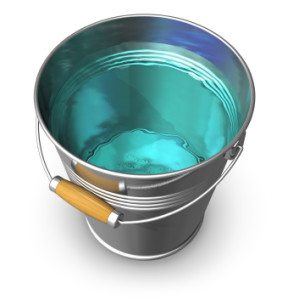
Foundation problems can be caused by differential moisture content. Engineers have performed extensive studies on differential moisture content. Structural support is one area of study. Differential moisture content is also studied along beaches to understand, predict, and control erosion better.
Differential moisture content happens when you have a soil area immediately adjacent to another and the moisture content of the ground is different. The areas of soil literally can be next to each other, touching, and the water content is different. Envision a wall of clouds at the leading edge of a weather front. That image is a great resemblance to what is happening on the ground your home sits on.
The soil behaves differently with different water saturations. Wet soil swells and rises. Dry soil has a tendency to compact and give way to weight above. Trees soak up the water from the soil and so the tree may be hydrated but the ground around the roots might be dry.
Here’s how your foundation may be impacted. If the area of ground under your home’s slab is has one level of moisture, then the whole slab reacts as one to the ground. When it’s very wet, it rises a little. When it’s dry, it sinks unnoticeably. However, if there is a differential moisture content under your home, if there is part of the ground that is dry and another that is saturated for prolonged periods, your foundation will eventually react to those soil conditions. Parts of the foundation will rise while other parts will sink. This results in a break in the integrity of the foundation. That usually means it will cost the homeowner some money to repair.
But repair is possible. Dawson Foundation Repair’s bell bottom pier method remains the industry’s gold standard. Use of the concrete pier with a flanged (or bell) bottom on stable soil or solid rock provides the most stable foundation support for homes in Texas. Our free inspection can give you all the data for you to make the best decision about the long-term integrity of hour home’s foundation. Your home is your biggest life investment and Dawson’s expert staff is ready to help you ensure the life of your home.
Dawson Foundation Repair installs only Bell Bottom Piers for homeowners and commercial property owners. Bell Bottom Piers have far more advantages over any other method of foundation repair and we feel the homeowner should receive the best option available. Dawson Foundation Repair services homes and commercial businesses all over Texas including Austin, Corpus Christi, Dallas, Houston, San Antonio, and other smaller cities. Call us for a free inspection and assessment of your home’s foundation security.
